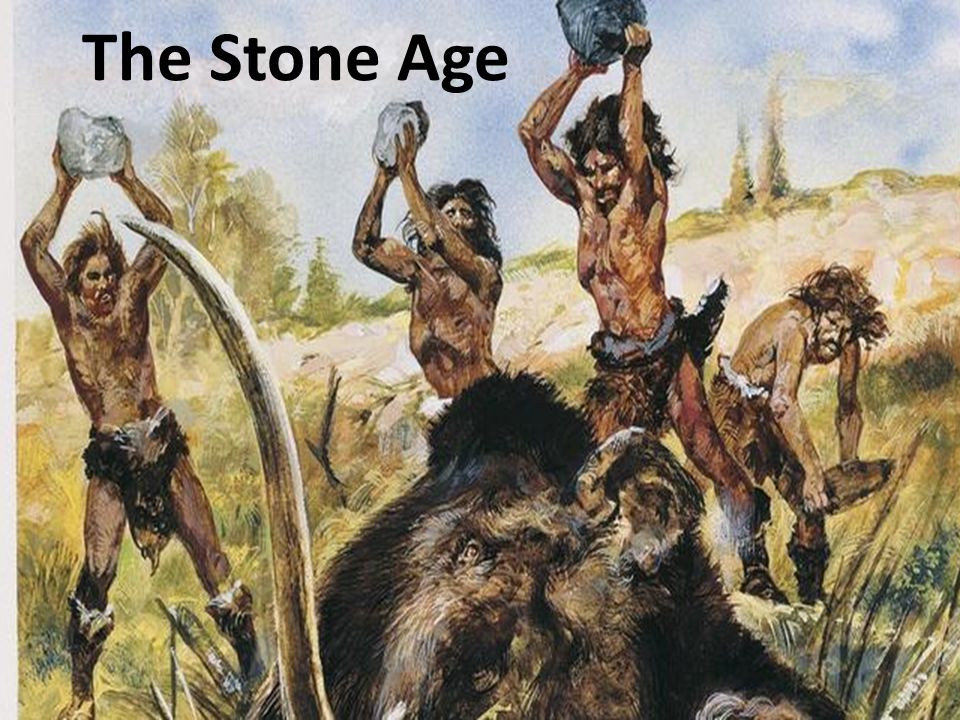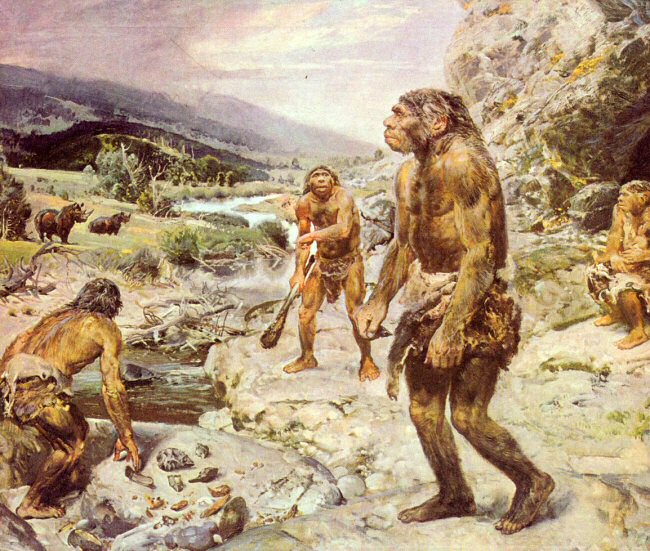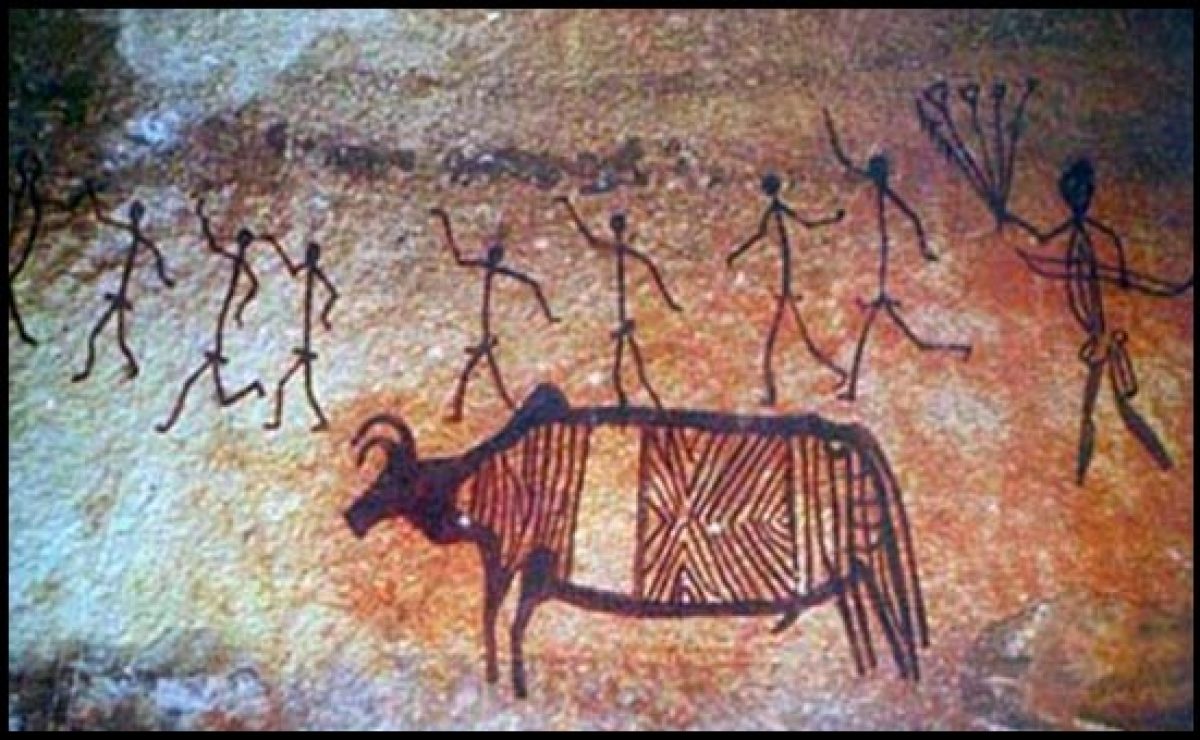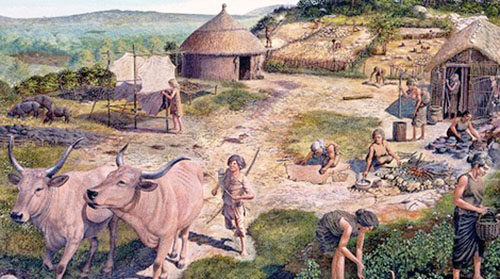History is divided into parts; pre-history, proto-history, and history. Events occurring before the invention of writing are considered the domain of pre-history. It is generally represented by the three Stone Age.
The period between prehistory and history, during which a culture or civilization has not yet developed writing but is mentioned in the written records of contemporary literate civilization. For example, the script of the Harappan civilization remains undeciphered; however, since its existence is noted in Mesopotamian writings, it is considered a part of proto-history.
The study of the past after the invention of writing and the study of literate societies based on the written and archaeological sources constitutes The history and identity of human settlements in India that go back to prehistoric times.
Stone Age and its Types
The credit for doing an early extensive study of Indian pre-history got to Robert Bruce Foote, who discovered what was probably the first Paleolithic tool discovered in India – the Pallavaram hand-ax.

Based on geological age, the type and technology of stone tools, and subsistence base, the Indian Stone age is classified primarily into three types:
- Old Stone Age, Paleolithic Age: 5,00,000-10,000 BCE
- Late Stone Age, Mesolithic Age: 10,000-6000 BCE
- New Stone Age, Neolithic Age: 6,000-100 BCE
Paleolithic Age (Hunters and Food Gatherers)

During the Lower Paleolithic Age, tools are based on the technology of core. In this technology, bigger stone peace was hit by other stone pieces & the outer layer was removed & the inner part was used as a tool.
During the Middle Paleolithic Age, “Flake Technology” was used for making tools. In this technology, the outer layer removed from a bigger stone piece was used as a tool.
During the Upper Paleolithic Age, tools were based on Blade Technology. These tools are sharp-edged. One edge of the stone was sharpened by hitting it with another stone. Tools made up of wood were also used. For 1st time during the Upper Paleolithic Age bone tools were also used. Antler’s bone was used as a tool. Bone tools were found from Belum Cave located in Kurnool district Andhra Pradesh.
The pattern of living & Geographical Area Occupied
During the Paleolithic Age, man lived in the foothills of the mountain. The Northern Plains were not occupied. Rivers were narrow in the foothills of the mountain that could be easily crossed. On plains, rivers were extremely wild.
Stone was easily available in foothills it was not there in plains. Caves were available in the foothills of mountains for taking shelter. Forest was less dense in foothills when compared with plains. Foothills were safe from floods in plains floods were frequent. Paleolithic Age man didn’t build an artificial home for residential purposes. Natural caves were used for residential use. Bhimbetka caves (Raisen-Madhya Pradesh) provide the best example.
Economic Life: The earliest man survived on routes & fruits. The earliest man was vegetarian because anatomically man was evolved enough to digest meat. As a human being evolved, man started consuming meat. Hunting began to practice. In this way, the Paleolithic man survived in hunting & food gathering activities.
Economic was subsistence surplus was absent. There was no concept of properly. During the Paleolithic Age, the population size was very small the hunting & food gathering act was quite sufficient to sustain human life.
Religious Life: During the lower & middle Paleolithic period, there was no idea of religion in any form. Religious life commences during the Upper Paleolithic Age this is indicated by the use of Burial practice. The dead bodies were no longer thrown away. They begin to be buried in the grave. The earliest grave has been found at Kumar (Andhra Pradesh). These belong to the upper Paleolithic Age.
Cultural Life: The Paleolithic man took interest in the art of painting. Once emerged the painting continued to be practiced. About 500 paintings were found on the walls of Bhimbetka Caves. The earliest painting is about 1 lac years old (lower Paleolithic Age). Most of these paintings belong to the Mesolithic.
Painters used red & white colors most commonly. At times yellow & green colors are also used. These colors were mineral in nature & some were extracted from plants. These paintings depict hunting. Fighting scenes, birds, animals & other day-to-day activities.
Some of the paintings found in Bhimbetka depict scenes of communal dance (group dance). This indicates that stone-age men practice dancing. Since dance is generally not possible without music, it appears that stone-age man was aware of music as well. Long being to be used by a man by the upper Paleolithic Age because the brain was developed enough to procure complex sentences.
Mesolithic

During this age better variety of Quartz stones such as Chert, Jasper, and Flint was used for making tools. The tools of this age were very small in size. The characteristic tools of this age were about 3 centimeters in size. They are known as “microlithic”. These tools are used as arrowhead sphere heads. During this period, man lived in Northern Plains.
The earliest evidence was found at Kalpi (Jalaun district-Uttar Pradesh). Pieces of evidence have also been found from Mahadaha & Sarai Nahar Rai (Pratap Garh district-Uttar Pradesh). The man had started constructing an artificial home. Huts were built by using bamboo & grass etc. Evidence of such type of living having found at Bagore (Rajasthan) Adamgarh (Madhya Pradesh), Langnaz (Gujarat), and Virbhanpur (West Bengal).
Economic Life: By 8000 BC, the climate was quite warm. The temperature had increased quite a bit. Researchers have brought to light that fast dry wind blew on earth around this age. Because of these dry winds temperatures increased quite significantly. Water got dried up from many parts of the Earth & land got cleared for vegetation (Grass).
Due to the improvement in climate, the population size of human size increased. This climate was far more suitable for human life. The increase in population information of groups & form the 1st time community life began (Number of families started living together). Due to the increase in population, hunting and food gathering activities were no longer in a position to ensure the availability of food material.
Under these circumstances, the man started domestication of animals & as a result of this pastoral life commenced. Animals were domesticated for meats. Animals like goats & sleep were the most common domesticated animals.
The domestication of animals was facilitated by the availability of vegetation. The economy was still subsistent with no surplus. Hunting & food gathering were practiced or continued.
Neolithic

Igneous stone was used for making the tools. Because of these tools, the Neolithic age is much stronger than the earlier periods. For the 1st time, man used Celt (a tool with a handle). The use of a handle made the tool much more efficient & effective. This indicates that Neolithic man was aware of the principle of torque.
Tools of the Neolithic age were based on the technology of grinding & polishing. As a result, these tools of this age are highly refined. During this age, the man occupied the entire Indian subcontinent. Houses were built by using sun-dried bricks for residential purposes. In Kashmir valley, Pit dwelling was practiced because these were women.
Economic Life of Stone Age
By 5000 BC, the climate had improved further and as a result, this population increased quite significantly. The pastoral economy was not in a position to meet the growing food needs of people. Under these circumstances, the man took to agriculture. The beginning of agriculture was a revolutionary development in many ways. Because for the first time, man became the producer of his own food man was no longer dependent on other living for survival (parasitic).
The beginning of agriculture resulted in sedentary life (settled life). The man was no longer required to move from place to place in search of food. The nomadic life came to end. For the first time, villages emerged. Mehrangarh (located in the valley of river Bolan in Balochistan) was the earliest village in the Indian subcontinent.
The need to store food grains compelled man to make pottery. Initially, the ports were handmade but later on the wheel was invented to turn (make the) ports. The invention of wheels was also revolutionary development because it paved the way for the invention of cards. The carts greatly expanded the scope of socio-cultural-economic interaction because the first time man got a vehicle.
Previous Year Questions for UPSC Prelims
Ques 1: Consider the following statements regarding early humans:
I. One of the well-established facts is that the earliest human fossils found in Africa date back to about 4.2 million years.
II. As per the human fossils found to show that the earliest human beings were shorter in height and had a smaller brains.
III. The fossils of various periods and stages of human development have been found in many parts of the world like Africa, China, Java, Sumatra, and southern Europe.
Which of the following statement(s) is/are correct?
a. Only I
b. I and II
c. II and III
d. All of the above
Answer: Option D
Explanation: It is now well established that the earliest human fossils found in Africa date back to about 4.2 m.y. These specimens show that the earliest human beings were shorter in height and had smaller brains. Humans evolved over a period of these 42lakhs years and the present form reached about 50,000 years ago. The fossils of various periods and stages of human development have been found in many parts of the world like Africa, China, Java, Sumatra, and southern Europe.
Ques 2: In which of the following Indian valley, the early hominid fossil has been found?
a. Indus valley
b. Narmada valley
c. Gangetic valley
d. All of the above
Answer: Option B
Explanation: The fossils of various periods and stages of human development have been found in many parts of the world like Africa, China, Java, Sumatra, and southern Europe. Unfortunately, due to the climatic conditions, except for the solitary find of a hominid fossil from Hathnaura in the Narmada Valley, no early human fossils have been found in India. According to the experts, the estimated cranial capacity of this fossil is equal to ‘that of Homo erectus. However, some scholars• feel that it may belong to the last phase of Homo erectus or an ‘archaic’ homo sapien.
Quick Questions on Stone Age for UPSC Preparation
What do you mean by Stone Age of India?
The beginning of prehistoric man’s usage of stones for practical purposes is known as the Stone Age. The Paleolithic or Old Stone Age, Mesolithic or Middle Stone Age, and Neolithic or New Stone Age are its three divisions.
What defines Stone Age?
The usage of simple stone tools by early human populations is known as the Stone Age. The Stone Age, which lasted around 2.5 million years, came to an end about 5,000 years ago when humans in the Near East started working with metal and producing tools and weapons out of bronze.
Why is it called the Stone Age?
The beginning of the use of stone, such as flint, for tools and weapons by early humans, also referred to as cavemen, is what gives this period its name. Additionally, they lit fires with stones. The earliest tools made by humans are these stone ones.
What are the 3 stone ages?
The Paleolithic (Old Stone Age), Mesolithic (Middle Stone Age), and Neolithic are the three distinct time periods that make up the Stone Age (New Stone Age). The level of skill employed by humans to create and employ stone tools determines the time period.
Who discovered Mesolithic Age?
Between the Upper Paleolithic and the Neolithic is the Mesolithic period. John Lubbock coined the phrases “Paleolithic” and “Neolithic” in his 1865 book Pre-historic Times. Hodder Westropp added the extra “Mesolithic” category as a transitional category in 1866.
What are the 3 ages of history?
The Stone Age, the Bronze Age, and the Iron Age are the three periods in human history. They are a periodization of prehistory that crosses over into some regions’ historical eras.
When did the Stone Age start and end?
A vast prehistoric era known as the Stone Age saw the widespread usage of stone to create tools having an edge, a point, or a percussive surface. With the invention of metalworking, the roughly 3.4 million-year-long period came to an end between 4,000 and 2,000 BCE.

